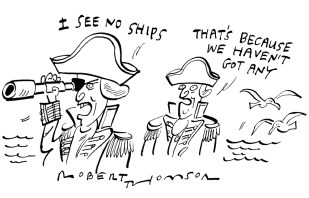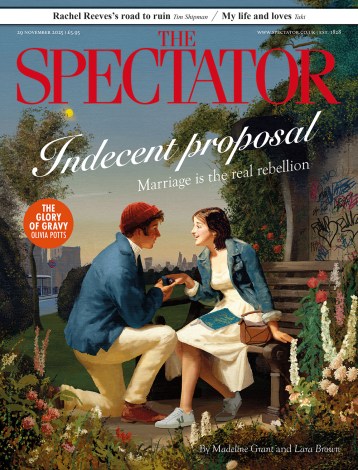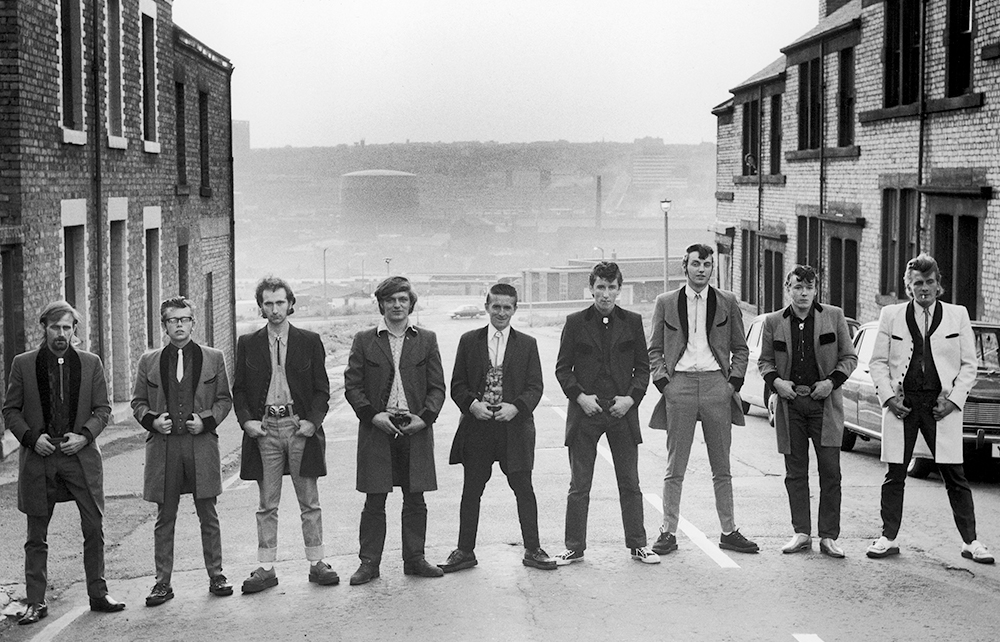In the wake of wars, youth cults spring up, those too young to have fought behaving in a way to scandalise those who did. The Bright Young People were the younger siblings of those who perished, battalion by battalion, on the Western Front. (Come to that, it was after the end of the Peloponnesian War that Socrates’s corruption of the youth became intolerable to Athens.) So when Max Décharné describes the Teddy Boys as Britain’s first youth counterculture, what he means is that they were Britain’s first working-class youth counterculture.
The Notting Hill riots of 1958 were largely blamed on Teddy Boys, possibly incited by Oswald Mosley’s sons
Décharné sketches in the elements that made the Teddy Boys a phenomenon. First was their distinctive dress: long drape jackets that recalled the Edwardian period, hence their sobriquet. The ‘New Look’ essentially harked back half a century, and as it worked its way down the social hierarchy it was adopted in adulterated or parodic form by teenagers. (Décharné has fun – perhaps a little too much fun – pointing out repeatedly that one dedicated wearer of crepe-soled creepers was Prince Philip.)
This breach of unwritten sumptuary codes was enabled by the sudden rise in youth purchasing power after the war. (Jon Savage’s England’s Dreaming zeroes in on this.) Then there was the hair – the quiff at the front, the DA (‘duck’s arse’) at the back, guaranteed to enrage retired colonels and serving sergeant majors at a time when men were still undertaking National Service. As one lieutenant colonel garrison commander reported: ‘We’ve looked into it very carefully, and eight times out of ten the man who dresses like that is the chief troublemaker.’ Teddy Girls apparently often wore their hair pulled into a ponytail, though the book’s pictures tell another story. Third was the moral panic: the book is rich with contemporary newspaper reports, editorials and letters condemning, or occasionally defending, the Teds, with the author providing derisive and occasionally heavy-handed commentary.

The final element slotted into place with rock and roll, invented just in the nick of time. The Tottenham dance halls of 1954 were still the home of swing music, but a couple of years later rock and rollers were everywhere, from ersatz British combos knocked together by ageing jazz musicians to the real thing in the shape of Bill Haley and the Comets, to a nascent and slightly more authentic British youth scene – from Billy Fury to Cliff Richard in Expresso Bongo.
After the moral panic came the popular cultural rise and sudden fall. Teds were everywhere in pulp novels, films and television shows until suddenly they weren’t. In Alan Sillitoe’s novel Saturday Night and Sunday Morning, published in late 1958, the hero, Arthur Seaton, is defiantly and explicitly a Ted, carefully hanging up his drape suit even after a hard night’s drinking. But in the film version, released in 1960, Albert Finney’s clothing is that of an Italian-influenced proto-mod.
There had been a sea change in those two years. Décharné protests that the way Ed the Ted, the only Teddy Boy in Colin MacInnes’s Absolute Beginners, is presented as a barely articulate ignoramus is ‘simplistic’ – but it is not surprising that Blitz Baby, the narrator hero of the book, sees him that way. First, the Teds had ruled the roost for nearly a decade by that time, and the rebels were being rebelled against in their turn; second, the Notting Hill riots of 1958, which had torn apart the narrator’s beloved ‘Napoli’, were largely blamed on Teddy Boys.
Décharné presents a half-hearted case for the defence. The Teddy Boys were incited in the riots by Oswald Mosley’s sons Alexander and Max, he suggests. ‘One resident interviewed decades later said he heard a voice with a middle- or upper-class accent in the crowd of white rioters, urging them on.’ In Nottingham, an ITV crew ‘gathered together some local Teds to stage a mock fight in the street’ that ended in a genuine fight between them and the police. Nonetheless, ‘were Teddy Boys involved in the Notting Hill riots?’ Décharné answers his own question: ‘Unquestionably.’
Blitz Baby was not alone in thinking the Teds an old order yielding place to a new. John Lennon and Tom Jones, keen Teds in their youth, had both moved on. The Times reported that Worthing Museum, ‘wanting to preserve present-day dress for the interest of generations to come’, was seeking a donation of a Teddy Boy outfit. ‘The museum says the fashion has already passed.’ This was 1962.
Ou sont les Teds d’antan? It is hard to think of another teenage movement that has left so little trace in popular, or even teenage, culture. The Bright Young People were replayed in the 1980s as Young Fogeys and the staider end of New Romanticism; hippie looks and sounds drift regularly in and out of fashion; Goth is eternally undead. But a brief Teddy Boy revival of the 1970s had more to do with glammed-up US notions of rocker fashion – leather jackets, not drapes. The 1980s saw little more than Edward Tudor-Pole playing the role of Ed the Ted in Julien Temple’s film of Absolute Beginners, performing the song ‘Ted Ain’t Dead’. Even then, nobody believed him.






Comments